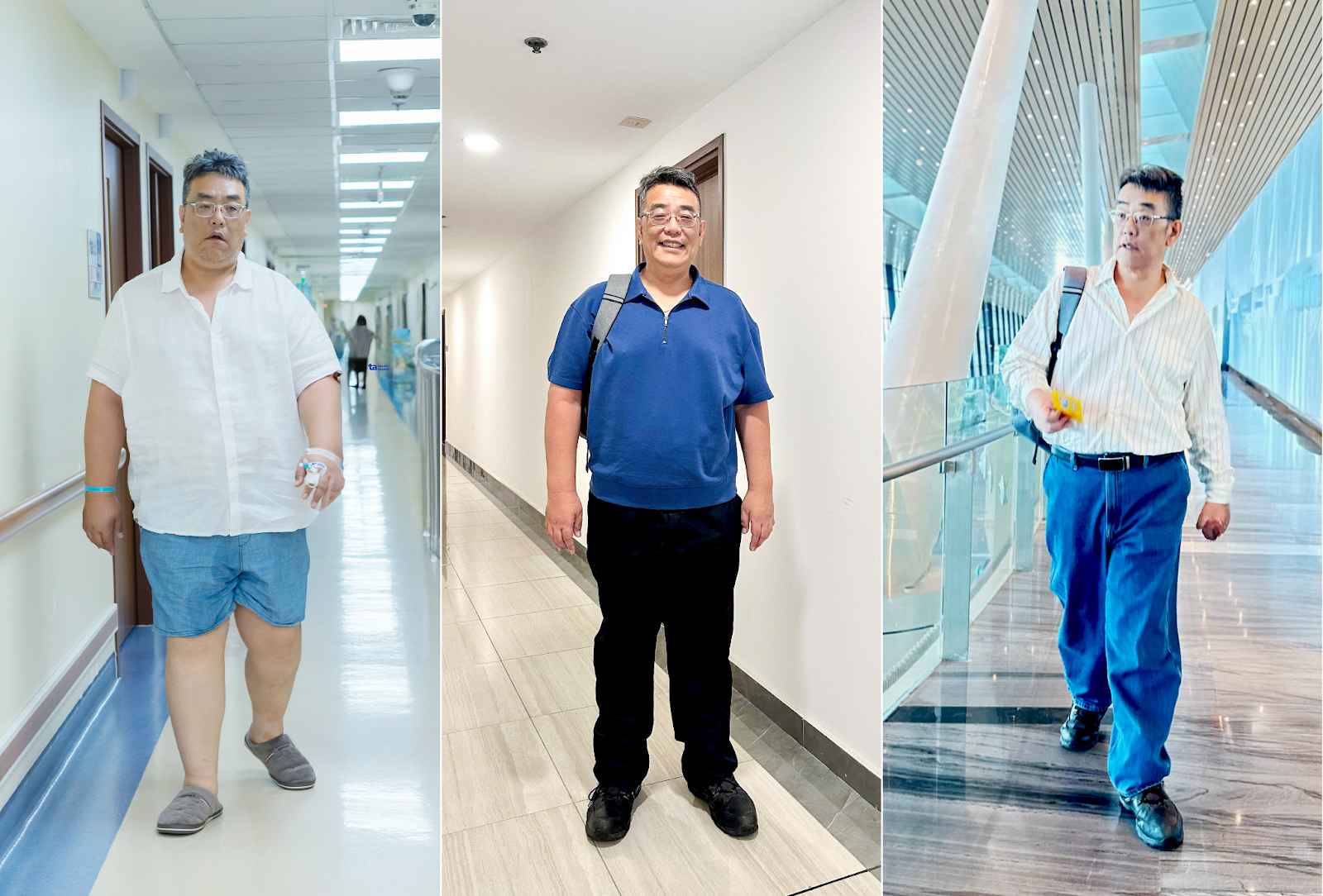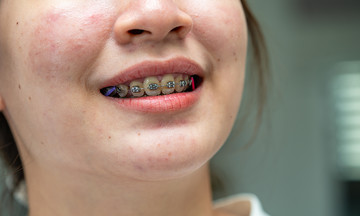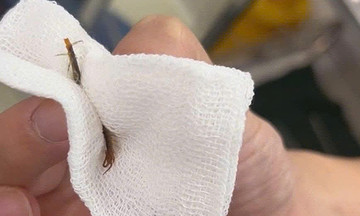When Mr. Min arrived at Tam Anh General Hospital in Ho Chi Minh City, he weighed 320 pounds, with a BMI of nearly 45, classifying him as severely obese. He suffered from various health issues, including grade three fatty liver disease, sleep apnea, gastroesophageal reflux disease (GERD), gastritis, and peptic ulcers. Despite dieting and exercising, his weight continued to increase by an average of 11-15 pounds annually.
On 5/9, Dr. Do Minh Hung, Director of the Center for Endoscopy and Minimally Invasive Digestive Surgery, stated that Mr. Min underwent SADI-S surgery, a procedure that combines gastric bypass with a modified intestinal pathway to promote weight loss and improve related health conditions.
This method creates an energy deficit in the body. By reducing the stomach's volume by 70-80%, the patient's food intake decreases, and their appetite is controlled. The intestinal modification, connecting the upper small intestine (duodenum) to a lower section (300 cm from the ileocecal valve), further reduces calorie and fat absorption. This allows for rapid and sustained weight loss.
According to Dr. Minh Hung, patients can lose 85-90% of their excess weight within one to two years after SADI-S surgery, a faster rate compared to the traditional sleeve gastrectomy, which has an effectiveness of approximately 75%.
 |
Dr. Minh Hung (far right) performs laparoscopic surgery on Mr. Min. Photo: Tam Anh General Hospital |
Dr. Minh Hung (far right) performs laparoscopic surgery on Mr. Min. Photo: Tam Anh General Hospital
Mr. Min recovered well after the surgery, walking the next day and being discharged two days later. He received dietary and exercise guidance, focusing on liquid and soft foods during the first week. He was also advised to consume protein-rich foods and vitamin supplements to prevent nutritional deficiencies.
Within two weeks, Mr. Min lost nearly 33 pounds, and after almost four months, his total weight loss reached 90 pounds. During a recent follow-up appointment, his health indicators showed significant improvement. His sleep apnea had resolved, and his fatty liver disease had reduced to grade one. Mr. Min aims to lose 110-132 pounds within a year. To achieve this, he needs to maintain a healthy diet and exercise regularly.
 |
From left to right, Mr. Min one day after surgery, after 10 weeks, and after 14 weeks. Photo: Hospital and patient provided |
From left to right, Mr. Min one day after surgery, after 10 weeks, and after 14 weeks. Photo: Hospital and patient provided
According to Dr. Hung, surgery is now a viable option for weight loss and not a last resort as it was previously considered. Patients must adhere to dietary and exercise regimens for effective and lasting weight loss.
Weight loss surgery is recommended for individuals with a BMI of 35 or higher or those with a BMI of 30 and at least one other condition such as high blood pressure, diabetes, sleep apnea, high cholesterol, or joint problems. SADI-S surgery is typically performed on super obese patients (BMI over 45) or those with lower BMIs who have severe metabolic disorders or have regained weight after gastric bypass surgery.
Quyen Phan
| Readers can submit questions about digestive diseases here for doctors to answer. |












